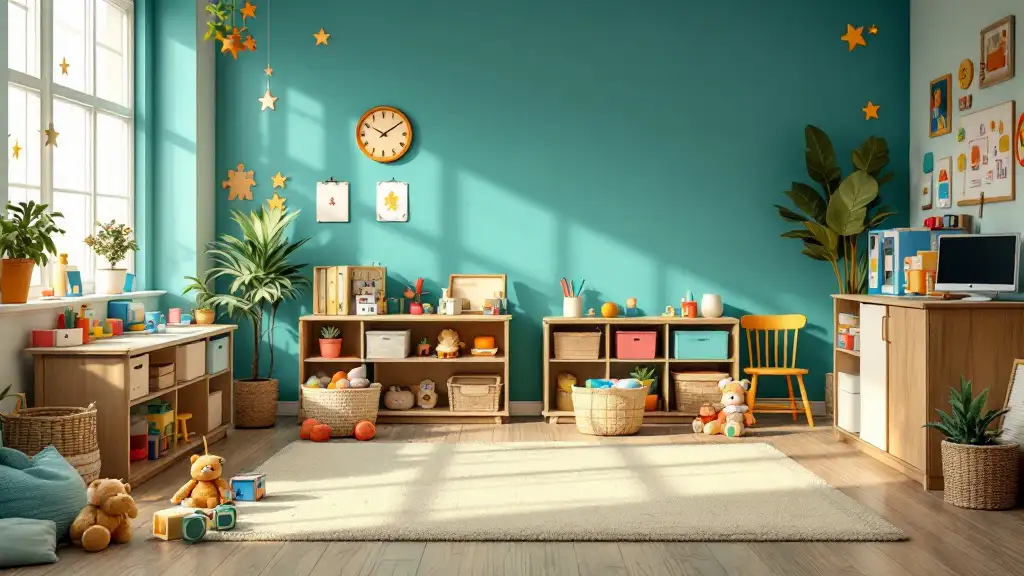Autism and Sleep
Understanding the Challenges and Strategies for Better Sleep in Autism

A Closer Look at Sleep Difficulties in Autism Spectrum Disorder
Sleep problems are highly prevalent in individuals with autism spectrum disorder (ASD), affecting both children and adults. These difficulties not only impact daily functioning and overall well-being but also influence core autism features such as repetitive behaviors and social communication. Given the complex interplay of biological, neurodevelopmental, and environmental factors, addressing sleep issues in autism requires a multifaceted approach involving assessment, intervention, and ongoing support.
Prevalence and Common Sleep Problems in Autism
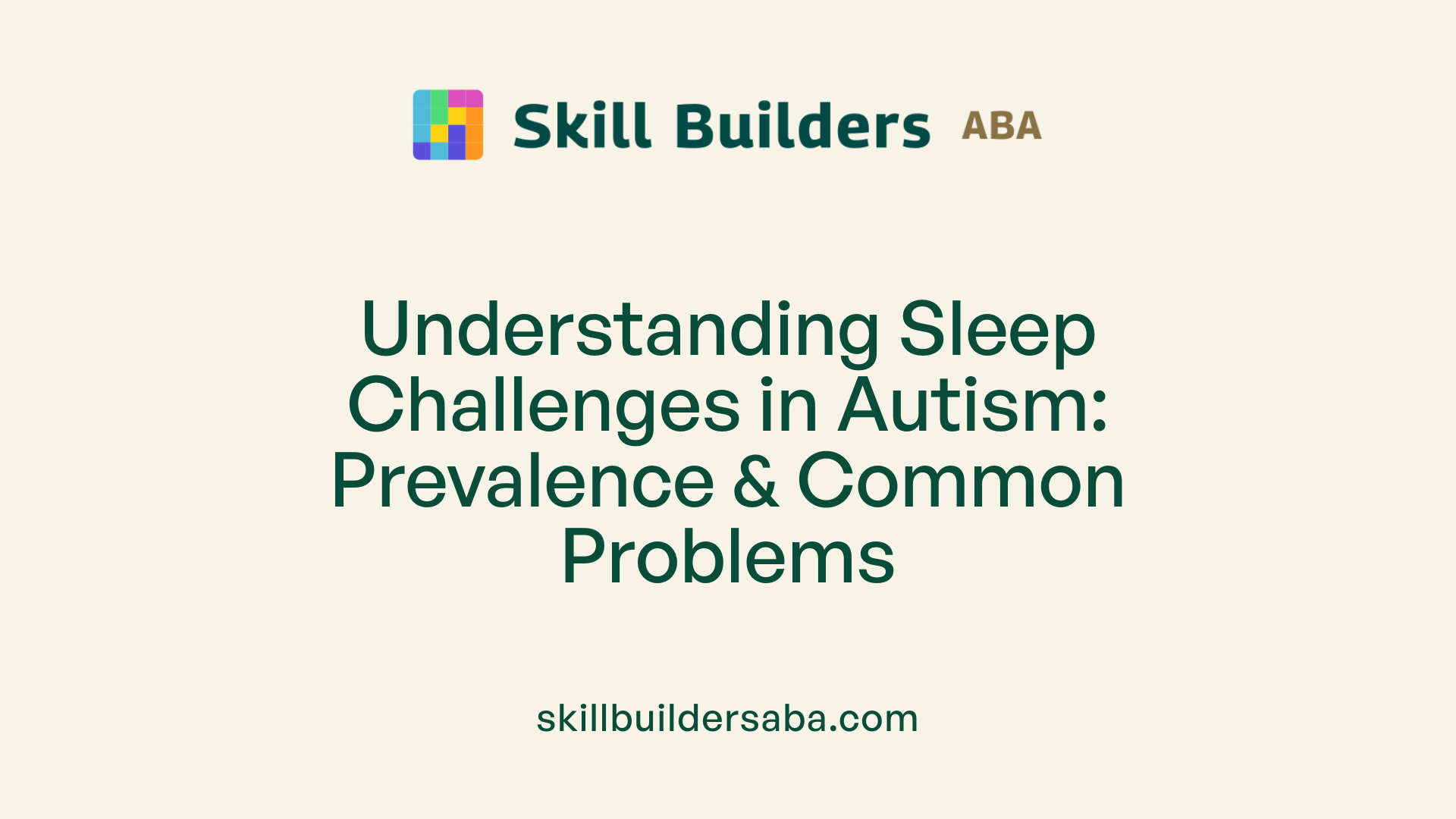
What are common sleep problems in autistic individuals?
Sleep difficulties are highly prevalent among those on the autism spectrum. Research indicates that between 40% and 80% of autistic children experience sleep challenges, which is significantly higher than in typically developing children. These issues are not limited to childhood; many autistic adults also face persistent sleep problems.
Autistic individuals often struggle with falling asleep, staying asleep through the night, and waking up too early. Bedtime resistance and irregular sleep routines are common, making it difficult to establish consistent sleep patterns. A significant portion of these sleep disturbances are due to a combination of biological, sensory, and behavioral factors.
In addition to difficulty initiating and maintaining sleep, many autistic people experience parasomnias such as nightmares, sleepwalking, sleep paralysis, and restless sleep. These behaviors can cause fragmented and less restorative sleep, affecting mood, cognition, and overall well-being.
Sleep disorders like insomnia, obstructive sleep apnea, restless legs syndrome, and periodic limb movement disorder are frequently diagnosed in this population. For example, studies have shown decreased REM sleep—which is vital for memory and emotional health—along with longer sleep latency and lower overall sleep quality.
Sensory sensitivities, such as hypersensitivity to noise or light, can further disrupt sleep routines. Co-occurring conditions like anxiety, depression, epilepsy, and other medical issues also compound sleep problems.
The impact of these sleep difficulties extends beyond rest; they influence daytime behaviors including increased irritability, hyperactivity, difficulties in learning, and social challenges. Addressing such sleep issues often requires comprehensive strategies that include behavioral interventions, sleep hygiene improvement, and medication when necessary.
Strategies like maintaining a sleep-conducive environment, establishing consistent routines, and using supplements like melatonin—especially under medical guidance—are commonly employed. The goal is to help autistic individuals achieve better sleep, which can lead to improvements in daytime functioning and overall quality of life.
Understanding the Causes of Sleep Difficulties in Autism
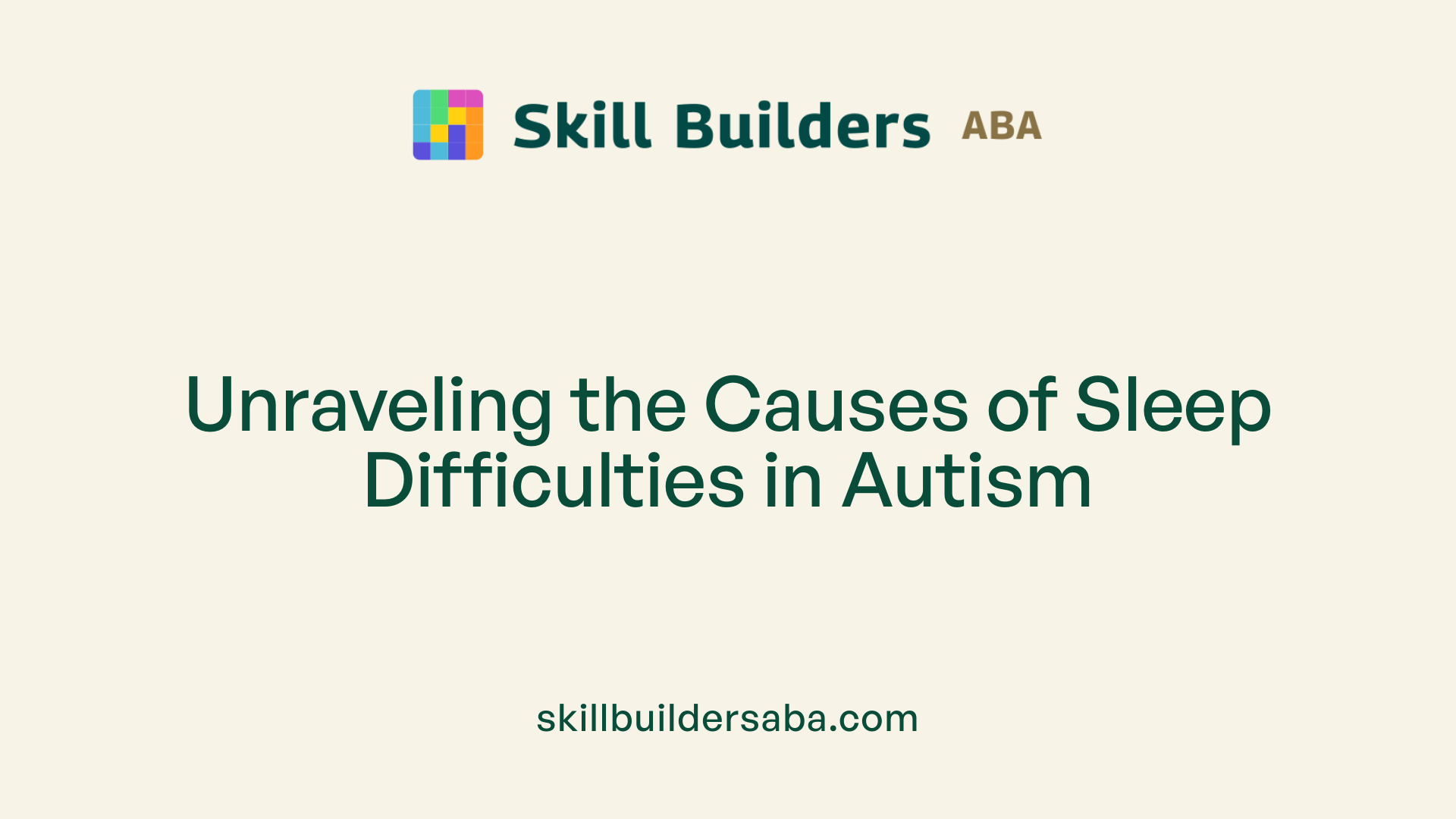
What causes sleep difficulties in individuals with autism?
Sleep problems are highly prevalent among people on the autism spectrum, affecting between 40% and 80% of autistic children and a significant portion of adults. These difficulties arise from a complex mixture of biological, neurological, and environmental factors that disrupt normal sleep patterns.
One major biological contributor is abnormal melatonin production and regulation. Melatonin, a hormone crucial for signaling sleep, often shows irregular or diminished secretion in autistic individuals. They may have mutations in genes controlling melatonin synthesis, leading to a 'flat melatonin curve' that makes it difficult for the body to cue sleep appropriately. Such genetic variations also affect circadian rhythms—the body's internal clock—resulting in delayed sleep-wake cycles and longer time to fall asleep.
In addition to melatonin, neurotransmitter imbalances play a role. Serotonin, which influences mood and sleep regulation, and GABA, the brain's primary inhibitory neurotransmitter, often exhibit irregular activity. These imbalances can impair the ability to relax and transition into sleep efficiently. Polysomnography studies have revealed abnormalities in REM sleep among children with autism, including decreased REM sleep quantity and immature organization of eye movements, further complicating restorative sleep.
Sensory sensitivities are also prominent in autism and significantly contribute to sleep disturbances. Hypersensitivity to light, sound, textures, and other stimuli can make it hard for individuals to relax or maintain a consistent sleep environment. Many autistic individuals are also more likely to experience difficulty in relaxing or establishing stable bedtime routines, especially if they rely on routines or have limited communication skills.
Furthermore, co-occurring health conditions like anxiety, gastrointestinal issues such as GERD, and sleep-disordered breathing contribute to sleep difficulties. Anxiety can make it hard to calm the mind at bedtime, while medical issues like sleep apnea or restless legs syndrome cause frequent awakenings.
Genetic mutations impacting specific circadian rhythm genes, such as CLOCK, also influence sleep-wake cycles, making regulation more challenging. These genetic factors may lead to irregular circadian signals and abnormal melatonin-release patterns.
In summary, sleep difficulties in autism stem from a multifaceted interaction of genetic, neurochemical, sensory, behavioral, and medical factors. Understanding these underlying causes is crucial for developing effective interventions and improving sleep health for autistic individuals.
Assessment and Diagnosis of Sleep Issues in Autism
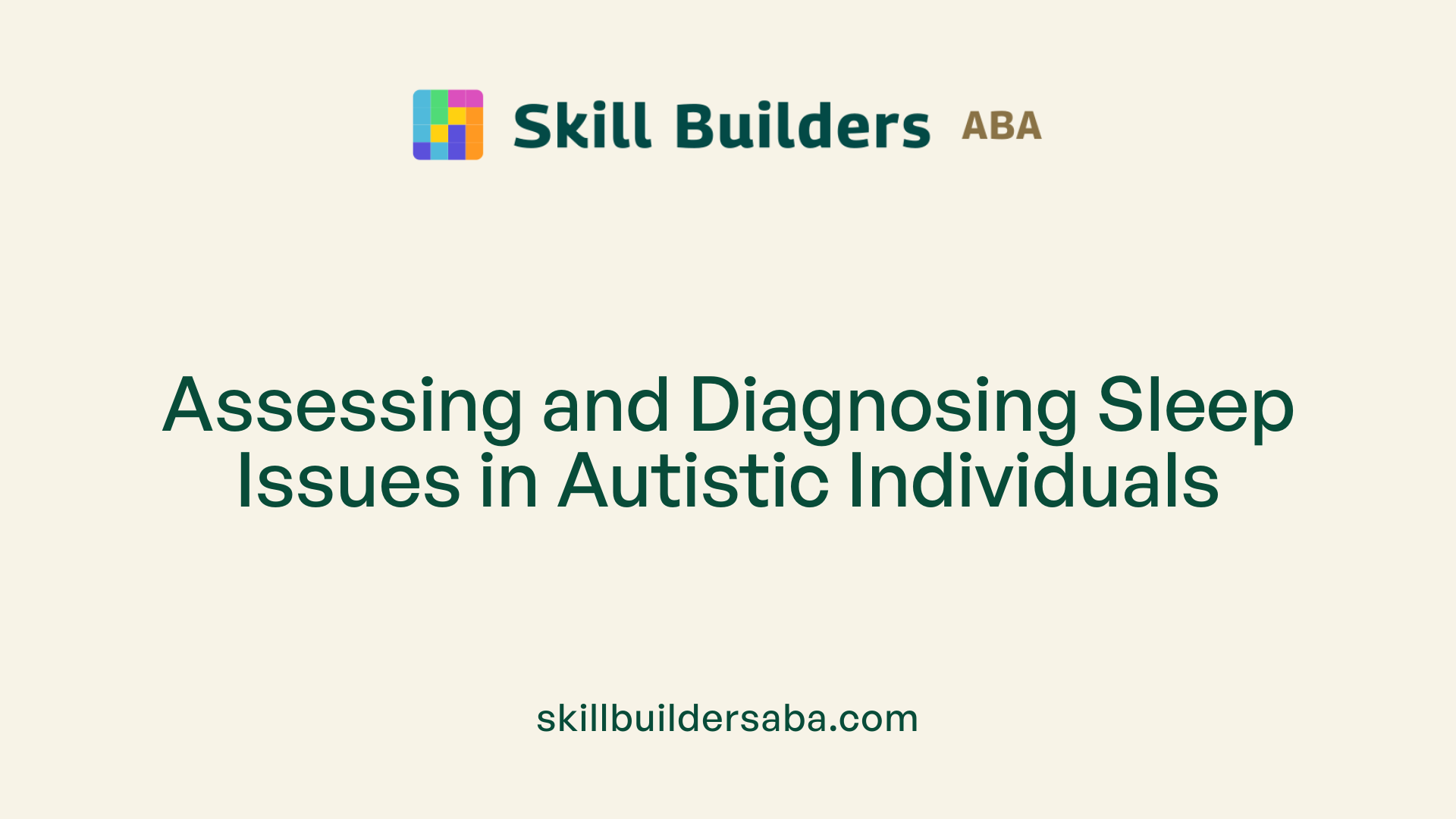
How can sleep issues in autistic individuals be assessed and diagnosed?
Evaluating sleep problems in individuals with autism involves utilizing a variety of assessment methods to understand their unique sleep patterns and challenges. Traditional tools include comprehensive sleep studies like polysomnography (PSG), which records brain activity, breathing, heart rate, and body movements during sleep. PSG is considered the gold standard for diagnosing sleep disorders such as sleep apnea or restless legs syndrome. However, because of sensory sensitivities and behavioral issues, PSG can sometimes be challenging for autistic individuals.
In addition to PSG, actigraphy is a popular, less intrusive method that uses wearable devices to monitor activity levels over days or weeks, providing insights into sleep duration and patterns. Sleep diaries maintained by caregivers and structured interviews also play a vital role. These diaries record sleep and wake times, bedtime routines, night awakenings, and daytime behaviors, offering a day-to-day perspective on sleep habits.
Behavioral assessments and caregiver interviews are crucial but may be limited by communication difficulties or recall bias. An autistic child or adult may have trouble articulating their sleep experiences, which can hinder accurate diagnosis.
Standard criteria, such as the Diagnostic and Statistical Manual of Mental Disorders, Fifth Edition (DSM-5), and the International Classification of Sleep Disorders (ICSD), are used to classify specific sleep issues. These guidelines help identify conditions like insomnia, circadian rhythm disorders, or parasomnias based on symptom patterns and duration.
Interpreting the collected data requires the expertise of healthcare professionals, including pediatricians, sleep specialists, or neurologists. They analyze the objective recordings from PSG and actigraphy alongside subjective reports to establish a diagnosis.
Given the sensory sensitivities and communication hurdles common in autism, home-based assessments are increasingly favored. They include simplified sleep studies or behavioral evaluations conducted in familiar environments, which can improve comfort and yield more accurate data.
Personalized diagnosis allows clinicians to design targeted interventions—whether behavioral strategies, environmental modifications, or medication like melatonin—to improve sleep quality. Early and accurate identification of sleep issues is essential for enhancing daily functioning, reducing stress for caregivers, and supporting overall health in autistic individuals.
Strategies and Interventions for Improving Sleep in Autism

What strategies and interventions can help improve sleep in autistic individuals?
Improving sleep in autistic individuals often requires a comprehensive approach that combines behavioral, environmental, sensory, and medical strategies. Because sleep difficulties can be caused or exacerbated by sensory sensitivities, anxiety, and irregular biological rhythms, tailored interventions are essential.
One of the most effective methods involves establishing consistent bedtime routines. Using visual supports or social stories can help prepare children for sleep and make the routine predictably calming. For example, visual schedules showing step-by-step bedtime activities can reduce anxiety and resistance. Teaching children to fall asleep independently and limiting nighttime distractions are also practical steps.
Creating a sleep-friendly environment is crucial. This includes making the bedroom dark, cool, and quiet to promote sleep. Using blackout curtains, noise machines, or white noise devices can help minimize sensory disruptions. Some children benefit from sensory management techniques like weighted blankets or pressure sheets, which can reduce physiological arousal and promote feelings of calm.
Good sleep hygiene practices are foundational. This involves minimizing screen time in the hour before bed, avoiding stimulants such as caffeine or certain medications, and maintaining a consistent sleep and wake schedule—even on weekends. Reducing exposure to bright screens, especially those depicting scary or violent content, can lessen sleep disturbances.
Relaxation techniques and anxiety management strategies can further support restful sleep. Techniques such as massage, deep pressure, calming music, or guided relaxation exercises can help decrease arousal and emotional stress.
In some cases, medical interventions are necessary. Melatonin supplements are frequently used and have been shown to help regulate sleep-wake cycles, especially in children with ASD who have irregular melatonin secretion. When behavioral and environmental strategies are insufficient, medical devices like Continuous Positive Airway Pressure (CPAP) for sleep apnea might be recommended.
A multidisciplinary approach, often involving behavioral therapists, medical professionals, and caregivers, ensures interventions are tailored to individual needs. Regular assessment and adjustment of strategies help optimize sleep outcomes.
This integrative approach not only improves sleep but can also positively affect daytime behavior, mood, learning, and overall well-being.
| Strategy | Approach | Additional Details |
|---|---|---|
| Behavioral routines | Establish consistent bedtime routines with visual cues | Use social stories, visual schedules, and independent sleep training |
| Environmental modifications | Create a dark, cool, quiet sleep space | Employ blackout curtains, white noise, sensory inputs like weighted blankets |
| Sensory management | Use weighted blankets, pressure sheets, comfortable bedding | Reduce physiological arousal and promote calming |
| Relaxation and anxiety reduction | Apply relaxation techniques, massage, calming activities | Decrease emotional stress and motor activity before bed |
| Sleep hygiene practices | Limit screen time, avoid stimulants, maintain schedule | Implement routines with clear cues and predictable timing |
| Medical interventions | Consider melatonin supplements, CPAP for apnea | Use under medical supervision, customize based on individual needs |
By combining these strategies within a structured plan, caregivers and health professionals can significantly improve sleep quality for autistic individuals, leading to better health, behavior, and quality of life.
The Role of Melatonin and Pharmacological Treatments in Autism Sleep Management
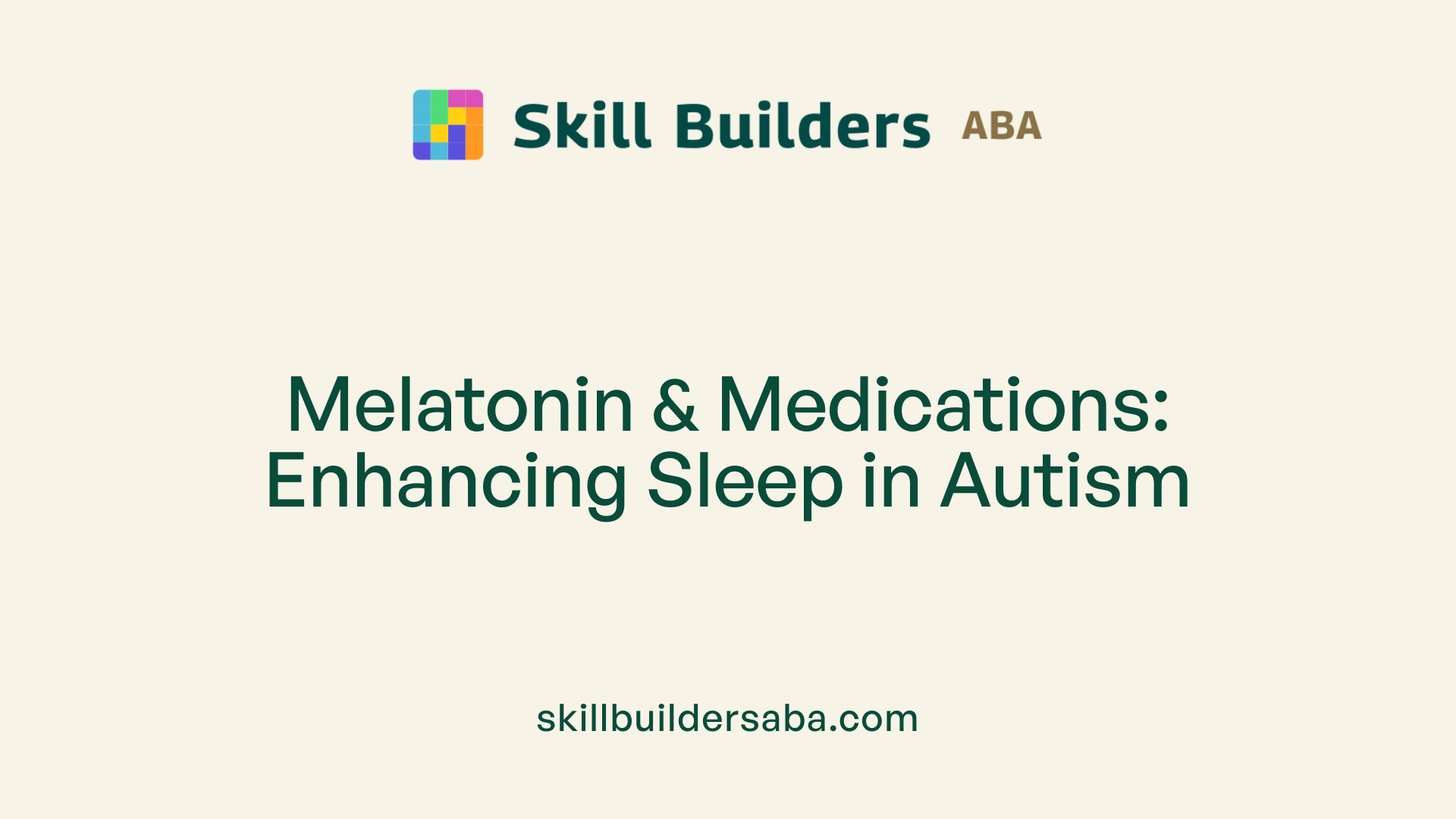
How effective is melatonin in improving sleep parameters for autistic individuals?
Melatonin treatments have shown considerable promise in addressing sleep difficulties in children and adults with autism spectrum disorder (ASD). Research indicates that melatonin supplements can significantly increase total sleep time—by about 73 minutes—and reduce sleep latency, the time it takes to fall asleep, by approximately 66 minutes. These improvements are not only statistically significant but also meaningful for daily functioning, helping reduce issues like delayed sleep onset, fragmented sleep, and early waking.
Clinical studies and meta-analyses support these findings, demonstrating that melatonin can effectively enhance sleep quality and efficiency in autistic individuals. The improvement in sleep duration and quality can translate into better daytime behavior, mood, and overall quality of life.
Recent Research and Future Directions in Autism and Sleep
What is the current understanding of the prevalence of sleep disturbances in autism?
Sleep problems are remarkably common among autistic individuals, affecting a significant majority. Research indicates that over 80% of children with autism experience sleep issues, such as difficulty falling asleep, frequent awakenings, or irregular sleep patterns. Among adults, nearly 80% also report sleep difficulties, including trouble staying asleep and early morning waking. These disturbances not only impact daily functioning but also exacerbate core autism features, including social communication challenges and repetitive behaviors.
What do recent studies tell us about the neurobiological mechanisms behind sleep problems in autism?
Recent investigations focus on understanding the brain-based causes of sleep disturbances in autism. Studies point to abnormalities in melatonin production and regulation, possibly due to genetic mutations in genes controlling the circadian rhythm. Polysomnography studies reveal altered sleep architecture, like reduced REM sleep (around 15%, compared to 23% in neurotypicals) and increased stage 1 sleep. These differences could stem from irregularities in neurotransmitters such as serotonin and melatonin, and disruptions in genes like CLOCK that regulate sleep-wake cycles.
How does genetics influence sleep issues in autistic individuals?
Genetic research has identified mutations affecting sleep regulation in autism. Variations in genes responsible for melatonin synthesis and circadian clock regulation, such as the CLOCK gene, lead to irregular melatonin release and a
Supporting Resources and Practical Tips for Better Sleep at Home
What tips can help parents and caregivers improve sleep for children with autism at home?
Sleep challenges are common among children with autism, but there are practical strategies that caregivers can implement to improve their child's sleep patterns. Establishing a consistent, calming bedtime routine is crucial. Using visual schedules or social stories can help children understand what to expect, reducing anxiety and resistance at bedtime.
Creating a sensory-friendly sleep environment also plays a vital role. This involves making the bedroom dark, quiet, and cool, which promotes better sleep. Incorporating tools such as weighted blankets or soft fabrics can help children with sensory sensitivities feel secure and relaxed.
Limiting screen time and stimulating activities in the hour before bed helps establish a natural transition to sleep. Relaxation techniques, like deep breathing exercises or warm baths, can prepare the body for rest.
Teaching children to fall asleep independently, rather than relying on being rocked or held, encourages self-regulation. Maintaining a regular sleep schedule—going to bed and waking up at the same time every day—supports the body's biological clock.
Minimizing household noise, avoiding caffeine and heavy meals close to bedtime, and using visual cues or rewards to motivate cooperation are additional ways to help improve sleep.
Which educational resources are available for parents?
Parents can access a variety of materials designed to support sleep improvements. Resources include booklets with specific guidance on sleep routines, videos demonstrating effective bedtime strategies, podcasts featuring experts discussing autism and sleep, and downloadable tools such as sleep quick tips and social story templates.
The Autism Treatment Network offers guidelines and booklets that detail approaches to managing sleep problems, including the use of melatonin.
How can support networks and professional guidance assist?
Connecting with parent groups and support networks provides emotional support and sharing of practical advice. Consulting healthcare professionals—pediatricians, sleep specialists, or occupational therapists—can offer personalized strategies, prescribe safe sleep aids like melatonin if necessary, and address any underlying medical conditions like sleep apnea or acid reflux.
What behavioral techniques, environmental modifications, and relaxation strategies can be helpful?
Implementing behavioral techniques such as teaching independence in falling asleep, using visual cues, and rewarding successful nights can be effective.
Relaxation exercises like relaxation training, deep breathing, or calming music can soothe the nervous system.
Environmental modifications involve maintaining a comfortable bedroom temperature, reducing noise, and creating a dark, clutter-free space.
Combining these approaches promotes a more restful sleep, which benefits both the child's and the family's overall well-being.
Supporting Autistic Individuals Through Better Sleep Opportunities
Addressing sleep issues in autism is essential for improving daily functioning, behavior, and overall quality of life. Combining assessment, personalized interventions, behavioral strategies, and medical treatments like melatonin creates a comprehensive approach tailored to individual needs. Continued research and the development of accessible resources empower parents, caregivers, and healthcare professionals to foster healthier sleep habits, ultimately helping autistic individuals reach their full potential and enjoy better well-being.
References
- Sleep and autism - National Autistic Society
- Sleep | Autism Speaks
- Autism and sleep disorders - PMC
- Helping Your Child With Autism Get a Good Night's Sleep - WebMD
- Autism and Sleep Issues | Sleep Foundation
- Sleep problems in autism, explained | The Transmitter
- Autism and Sleep - Neurodivergent Insights
- Sleep Problems and Autism Spectrum Disorder
- Center for Sleep in Autism Spectrum Disorder - Stanford Medicine
- Sleep Problems in Autism Spectrum Disorder - PubMed
.svg)














